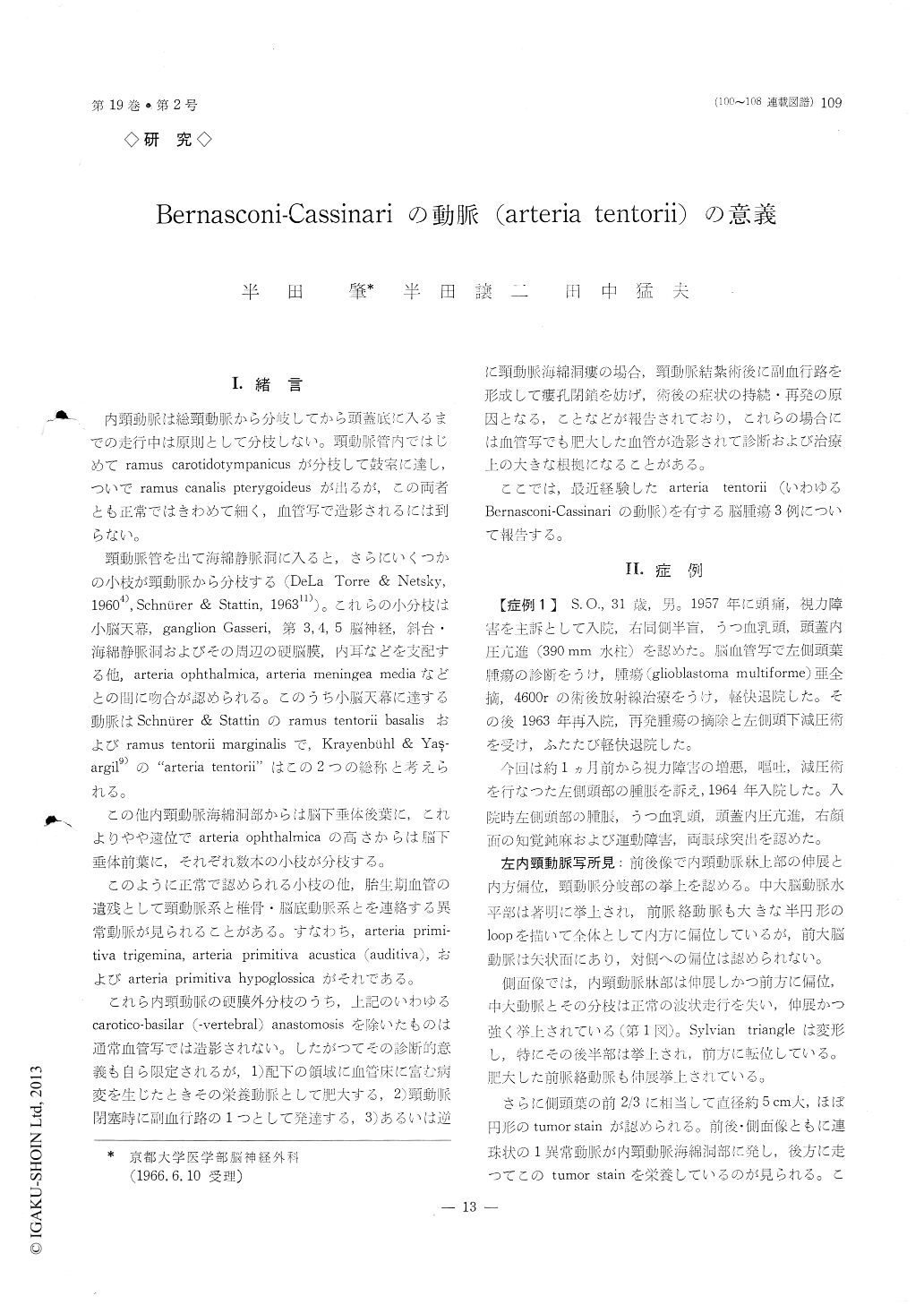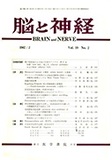Japanese
English
- 有料閲覧
- Abstract 文献概要
- 1ページ目 Look Inside
I.緒言
内頸動脈は総頸動脈から分岐してから頭蓋底に入るまでの走行中は原則として分枝しない。頸動脈管内ではじめてramus carotidotympanicusが分枝して鼓室に達し,ついでramus canalis pterygoideusが出るが,この両者とも正常ではきわめて細く,血管写で造影されるには到らない。
頸動脈管を出て海綿静脈洞に入ると,さらにいくつかの小枝が頸動脈から分枝する(DeLa Torre & Netsky,19604),Schnürer & Stattin,196311))。これらの小分枝は小脳天幕,ganglion Gasseri,第3,4,5脳神経,斜台・海綿静脈洞およびその周辺の硬脳膜,内耳などを支配する他,arteria ophthalmica, arteria meningea mediaなどとの間に吻合が認められる。このうち小脳天幕に達する動脈はSchnürer & Stattinのramus tentorii basalisおよびramus tentorii marginalisで,Krayenbühl & Yas—argil9)の"arteria tentorii"はこの2つの総称と考えられる。
The arteria tentorii (Bernasconi-Cassinari's artery) was visualized by carotid angiography in three case: of brain tumors, two with tentorial meningiomas and the other with a temporooccipital basal glioblastoma multiforme.
Available literature was reviewed and anatomical studies in the monkey were described briefly. The artery arises from the posterior part of the cavernous portion of the internal carotid artery, and supplies the Gasserian ganglion, 3 rd, 4 th, and 5 th cranial nerves, cerebellar tentorium, and the dura of the cavernous sinus and clivus with blood. The small size of the artery does not permit its angiographic demonstration in usual cases.
In the majority of the cases in which the arteria tentorii is contrast-filled, the artery feeds the tentor-ial meningioma. Nevertheless visualization of the artery is by no means pathognomonic of tentorial meningiomas, but only indicates the site and rich vascularization of the lesion.

Copyright © 1967, Igaku-Shoin Ltd. All rights reserved.


